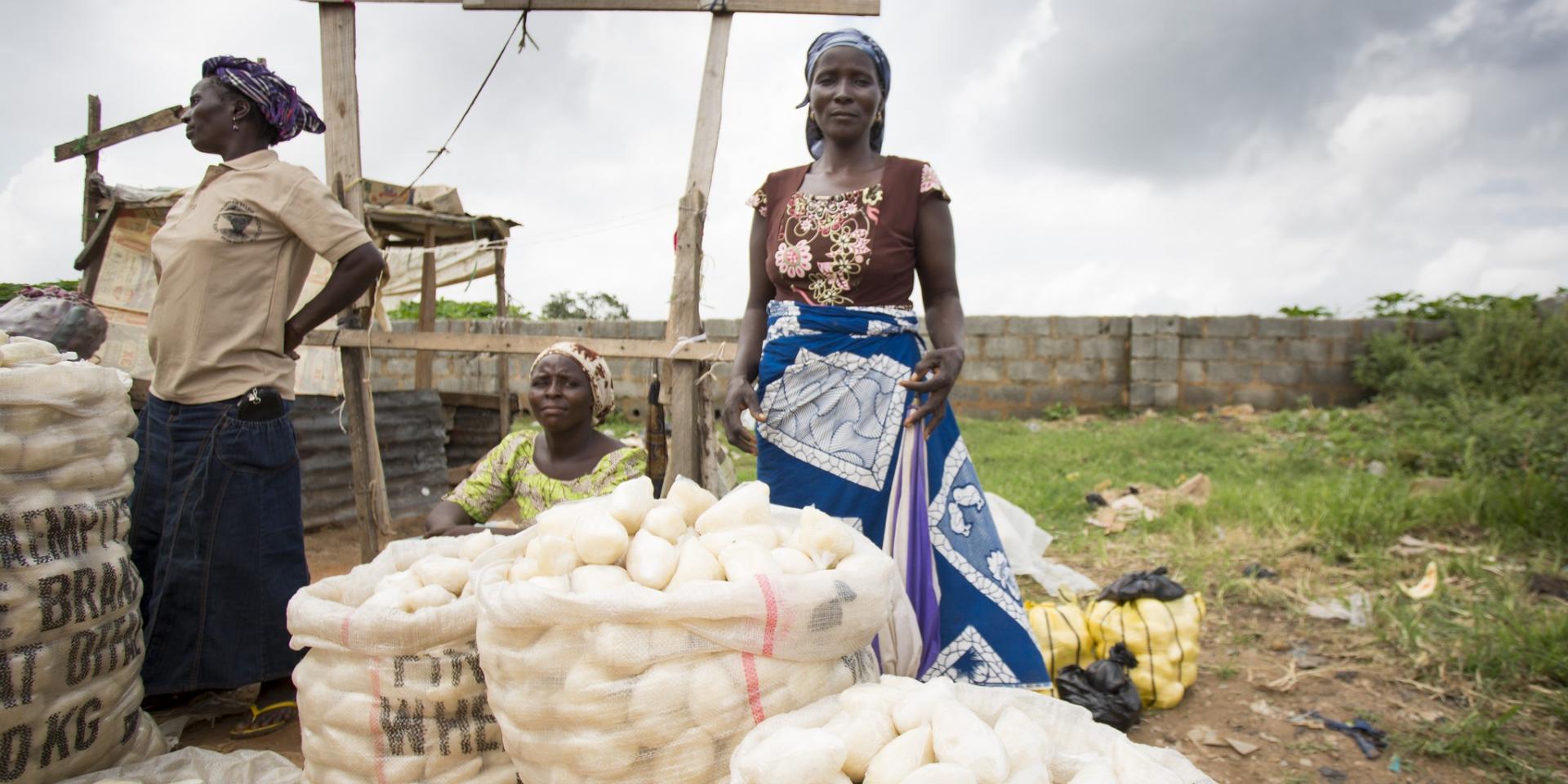The critical role of women in avoiding a Covid-19 “food pandemic” in sub-Saharan Africa

ANTANANARIVO, Madagascar, Jun 24 2020 (IPS) - As infections with Covid-19 appear to be intensifying in sub-Saharan Africa (SSA), fears of severe food shortages have prompted experts to warn that the region may be “on the brink of a hunger pandemic.” Efforts are intensifying to rally a major global response.

Credit: Kristin Palitza/IPS
But averting what some experts believe could be a food crisis of immense proportions requires paying close attention to an often overlooked feature of food security in the region: African women play a large and growing role in all aspects of the region’s food systems—whether it’s growing crops and raising livestock, selling and purchasing food in local markets, or dealing with the nutritional needs of their households.
African women often assume this burden while laboring with key disadvantages due to long-standing gender roles that can limit their access to economic resources—both within their households and communities. To be effective, any intervention to avert a food crisis caused by the pandemic will need to navigate a fraught terrain of gender inequality—and not just in the interest of social justice. Women are critical to feeding all Africans. The more they suffer, the more the continent will suffer.
Most of the food consumed in SSA is produced on small-scale family farms where, in many countries, 40 to 60 percent of farmers are women. Yet these women often lack equal access to quality seeds, fertilizers, good land, credit, technical advice and new technologies.
I work with a non-profit international research consortium that is mobilizing a global network of experts who understand how gender equality can be a powerful force in revitalizing rural economies–increasing their food security and making them more resilient to a number of challenges.
My colleagues and I realize that in the face of this unprecedented crisis, the work of the gender researchers that make up our new CGIAR GENDER Platform is more urgent than ever. The lessons that have emerged from past research conducted by GENDER’s partners can be illuminating as we seek ways to stop the fight against COVID-19 from producing an outbreak of hunger and malnutrition.
One important lesson is the need to develop solutions that account for the limited mobility many women face. Long before COVID-19, it was challenging for African women farmers to carve out time to get their goods to market, where the money they earn is often used to purchase additional food for their families.
In Western Kenya, for example, one reason women dairy farmers have not earned and produced as much as men is because their household work makes it very difficult to travel to central cooling facilities to sell their milk. In response, the New Kenya Co-operative Creameries (NKCC) promoted the use of small coolers in local neighborhoods where women can easily deliver milk for pick-up. Creating this type of last-mile linkage—for a number of commodities— can help build bridges between women producers and consumers in the midst of restrictions imposed to stop the spread of COVID-19.
Secondly, tailoring how we deliver information will be critical for women farmers. For example, as primary food vendors, women will need to be informed about when local markets will be open for business. But information access has been a perennial challenge.
A study in Ghana, for example, found that, despite enthusiasm around Africa’s widespread adoption of mobile phones, using text messaging and smartphone apps to deliver climate forecasts to farmers might miss a lot of women farmers. Compared to men, women are less likely to own a cell phone or have the finances to purchase air time. Literacy may also be lower for women. Moreover, the social network many women use to overcome these barriers could be closed-off by the COVID-19 clampdowns.
The solution to dealing with the gender inequality around climate forecast services holds true for delivering information to farmers during this pandemic: conveying information via multiple channels, such as radio or videos, was found to be effective in reducing this technology-related gender gap.
Finally, giving women an equal voice in making decisions about the food produced on their farms can lead to better nutrition.
In Malawi, outreach to women proved decisive in community adoption of new varieties of orange-fleshed sweet potatoes that are naturally high in vitamin A. Women farmers were swayed by the nutritional benefits they offered for their children—even though men traditionally have been in charge of sweet potato crops.
In Tanzania and Ghana, women who had greater access to irrigation were more likely to use it to grow nutritious crops for household consumption. In the face of COVID-19 and its potentially devastating effects on hunger and malnutrition, any kind of aid focused on improving household nutrition must be directed towards women.
Today, there is a lot of discussion in the development community that confronting the food-related problems caused by this pandemic presents an opportunity for “building back better.” That means designing interventions that can also help address problems that pre-dated the current crisis and will be here long after it’s over.
Subjecting emergency food interventions now being planned for SSA to something of a gender stress-test is one way we can address the immediate challenge before us while helping communities emerge from the crisis on even firmer footing.
##
This OpEd was first published on ipsnews.net. Read the original piece here.